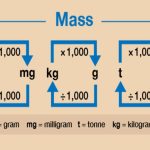As you will see in this chapter, the proper handling of units is an essential part of being an engineer. Moreover, checking the consistency of units in your equations will prove to be a valuable tool that will reduce the number of errors you commit when performing engineering calculations. Engineers and scientists have to be able to communicate not only with words but also by carefully defined numerical descriptions. Read the following news report that appeared in the Wall Street Journal (June 6, 2001): SEOUL, South Korea—A mix up in the cockpit over whether altitude guidance was measured in feet or meters led to the crash of a Korean Air Lines McDonnell Douglas MD-11 freighter soon after takeoff in Shanghai in April 1999, investigators said.
The crash killed all three crewmembers. Five people on the ground were killed and 40 more were injured when the plane went down in light rain onto a construction site near Shanghai’s Hongqiao Airport. According to a summary of the crash report released by South Korean authorities, a Chinese airtraffic controller directed the pilots to an altitude of 1,500 meters (4,950 feet). The plane was climbing rapidly to that level when the co-pilot told the pilot he thought the instructed height was 1,500 feet, equivalent to 455 meters. The international aviation industry commonly measures altitude in feet, and the confusion led the pilot to conclude the jet was almost 1,000 meters too high, so he quickly moved the controls to lower the plane. As the plane descended, the pilot realized the error but couldn’t correct the mistake in time.
South Korea’s Ministry of Construction and Transportation said Korean Air Lines would lose the right to serve the Seoul-Shanghai cargo route for at least two years because of errors by the pilots. Korean Air Lines said it would appeal the decision. . . Now you can understand the point of defining your quantities carefully so that your communications are understood. What are units and dimensions and how do they differ? Dimensions are the general expression of a characteristic of measurement such as length, time, mass, temperature, and so on; units are the means of explicitly expressing the dimensions, such as feet or centimeters for length, or hours or seconds for time. Primarily two types of units are used in this text:
1. SI, formally called Le Système Internationale d’Unités and informally called SI or, more often (redundantly), the SI system of units
2. AE, or American Engineering system of units, not to be confused with what is called the U.S.
Conventional System (USCS) or the English system of units The SI system has certain advantages over the AE system in that fewer names are associated with the dimensions, and conversion of one set of units to another is easier, but in the United States the AE system has deep roots. Most modern process simulators and other software packages (e.g., Mathcad) allow the use of either or mixed sets of units. Dimensions and their respective units are classified as fundamental or derived:
• Fundamental (or basic) dimensions/units are those that can be measured independently and are sufficient to describe most physical quantities such as length, mass, time, and temperature.
• Derived dimensions/units are those that can be developed in terms of the fundamental dimensions/units.



